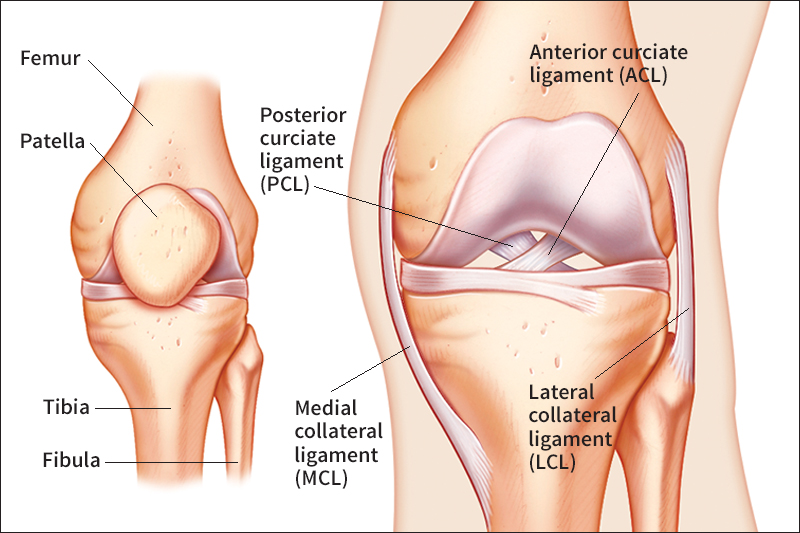Knee is the joint where the thighbone meets the large bone of the lower leg. The knee moves like a hinge, but it can also rotate and move a little from side to side. The knee is more likely to be damaged than most other joints because it is subject to tremendous forces during vigorous activity. Most of the knee injuries that occur in football and other sports result from twisting the joint.

The patella (kneecap) is a small, flat, triangular bone in front of the joint. It is not directly connected with any other bone. Muscle attachments hold it in place.
The femur (thighbone) and the tibia (large bone of the lower leg) are connected in three ways: (1) by ligaments (strong, cordlike tissues); (2) by muscles; and (3) by a synovial capsule. The synovial capsule surrounds the joint.
The knee ligaments are the strongest connections between the femur and the tibia. Ligaments keep the bones from moving out of position.
One group of muscles bends the knee and another group straightens it. Cords called tendons attach the muscles to the bones.
The synovial capsule secretes a liquid called synovial fluid, which resembles raw egg white. The synovial fluid nourishes the joint surfaces and reduces friction between them. If the synovial capsule is injured, it may produce too much fluid. This extra fluid is sometimes called “water on the knee.”
Smooth tissue called cartilage covers the ends of the leg bone and thigh bone. This tissue helps the bones slide easily over each other. Because cartilage is springy, it also acts as a cushion.
